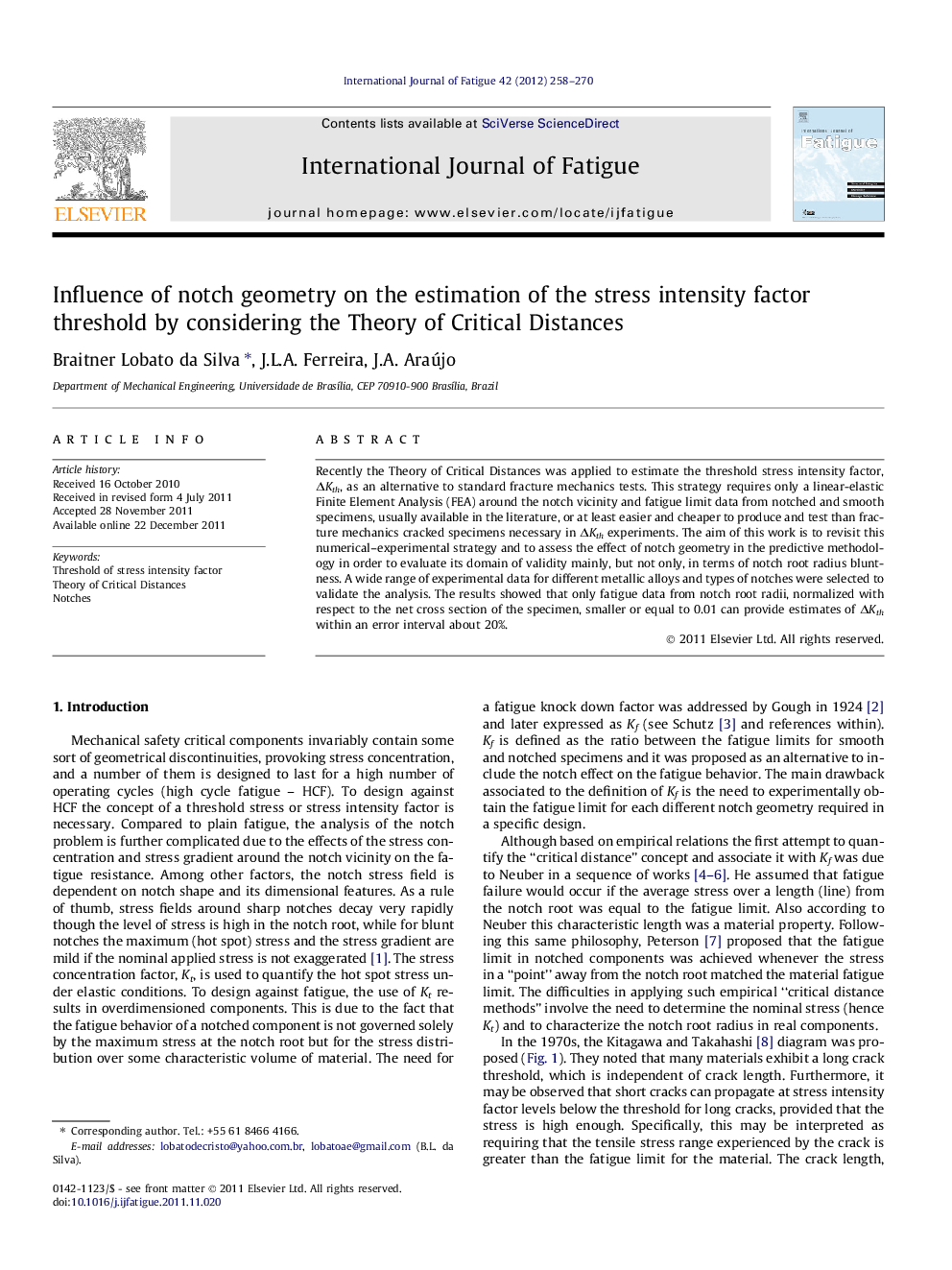| Article ID | Journal | Published Year | Pages | File Type |
|---|---|---|---|---|
| 781067 | International Journal of Fatigue | 2012 | 13 Pages |
Recently the Theory of Critical Distances was applied to estimate the threshold stress intensity factor, ΔKth, as an alternative to standard fracture mechanics tests. This strategy requires only a linear-elastic Finite Element Analysis (FEA) around the notch vicinity and fatigue limit data from notched and smooth specimens, usually available in the literature, or at least easier and cheaper to produce and test than fracture mechanics cracked specimens necessary in ΔKth experiments. The aim of this work is to revisit this numerical–experimental strategy and to assess the effect of notch geometry in the predictive methodology in order to evaluate its domain of validity mainly, but not only, in terms of notch root radius bluntness. A wide range of experimental data for different metallic alloys and types of notches were selected to validate the analysis. The results showed that only fatigue data from notch root radii, normalized with respect to the net cross section of the specimen, smaller or equal to 0.01 can provide estimates of ΔKth within an error interval about 20%.
